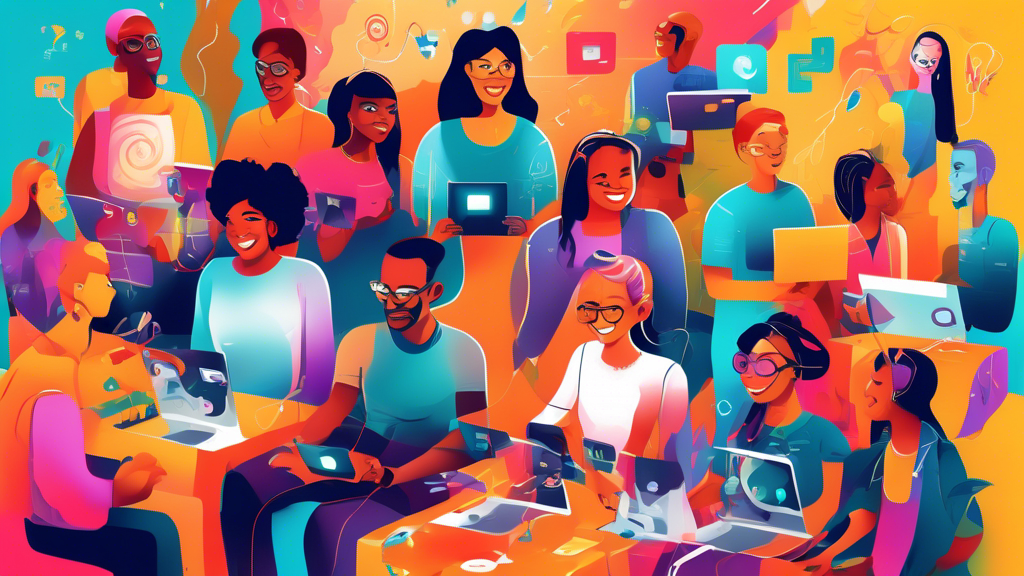Introduction: The Digital Door Wide Open
Imagine walking up to a building you’ve been excited to visit, only to find the door is too narrow for you to enter. That’s the reality many face when navigating the internet today. In our digital age, web accessibility isn’t just a nice-to-have; it’s a must-have. As we embark on this journey through the intricate pathways of understanding web accessibility, let’s remind ourselves that making the internet inclusive for all isn’t just about following protocols—it’s about opening doors for everyone.
The Essence of Web Accessibility
Web accessibility is the practice of ensuring websites, tools, and technologies are designed and developed so that people with disabilities can use them. It encompasses all disabilities affecting access to the Web, including auditory, cognitive, neurological, physical, speech, and visual impairments. But it’s not just about aiding those with disabilities; it’s about creating a flexible and adaptable online environment that enhances usability for all users. After all, who hasn’t used subtitles on a video at some point, perhaps not realizing it’s a feature born from accessibility needs? And that’s just the tip of the iceberg.
Why It Matters More Than Ever
In our constantly connected world, the internet is a crucial resource for accessing information, services, employment, education, and much more. Ensuring web accessibility removes barriers that prevent interaction with, or access to, websites by people with disabilities. When websites and web tools are correctly designed and coded, people with disabilities can use them more effectively. Plus, improving accessibility enhances usability for everyone—it’s like adding an automatic door opener; even if you can open the door yourself, it’s nice when it magically opens for you.
Breaking Down Barriers: Key Components of Web Accessibility
To truly understand web accessibility, it’s essential to know its components. These include:
- Content: The information in a web page or application, including natural information (text, images, sounds) and code or markup that defines structure and presentation.
- User interface: The components of the web page users interact with, such as buttons, forms, and navigation links.
- Visual design: The appearance of the web page, which can greatly affect its navigability and readability.
- Assistive technologies: Tools used in conjunction with web content by people with disabilities to improve their web browsing experience. Examples include screen readers, speech recognition software, and screen magnification software.
Accessibility is not a one-time task but a principle that must be integrated into the lifecycle of web content development.
Practical Steps to Achieve Web Accessibility
So, how do we ensure websites are accessible? Here are key steps to take:
- Conduct an Accessibility Audit: Evaluate your website’s accessibility using tools and guidelines, such as the Web Content Accessibility Guidelines (WCAG).
- Implement Changes: Based on the audit, modify your website’s design, content, and development practices to meet accessibility standards.
- Regular Updates and Testing: Keep your website updated and periodically test it for accessibility to ensure ongoing compliance and usability.
- Training and Awareness: Educate your team about the importance of accessibility and provide training on how to maintain it.
Remember, making a website accessible might feel like you’re learning to juggle while riding a unicycle. But once you get the hang of it, it becomes second nature, benefiting not just users with disabilities but everyone who visits your site.
Innovation Through Accessibility
Far from being a constraint, prioritizing accessibility can drive innovation. It encourages designers and developers to think outside the box, leading to creative design solutions that benefit all users. Features that originated from accessibility needs, such as voice commands or gesture-based navigation, are now widely used and appreciated by a broader audience. This innovation circle, initiated by accessibility requirements, underscores the universal benefit of a web designed for all.
Conclusion: Accessibility, A Web of Opportunity
Understanding web accessibility is the first step towards making the internet an inclusive space for everyone. By recognizing the importance of accessibility, implementing practical steps, and fostering innovation, we can ensure that the web remains a universal resource. So, let’s take that step together, and in doing so, make the digital world accessible for all, one website at a time. Just think of it as the internet’s version of keeping the porch light on for everyone.
And remember, if you’re looking to build or redesign a website with accessibility in mind, Star Metaverse Georgia is your go-to destination for all web development needs. Our team of experts is dedicated to creating websites that are not only visually stunning but also universally accessible. Embrace the future of inclusivity with Star Metaverse Georgia and unlock a world where everyone has a key to the digital door.

Comments are closed